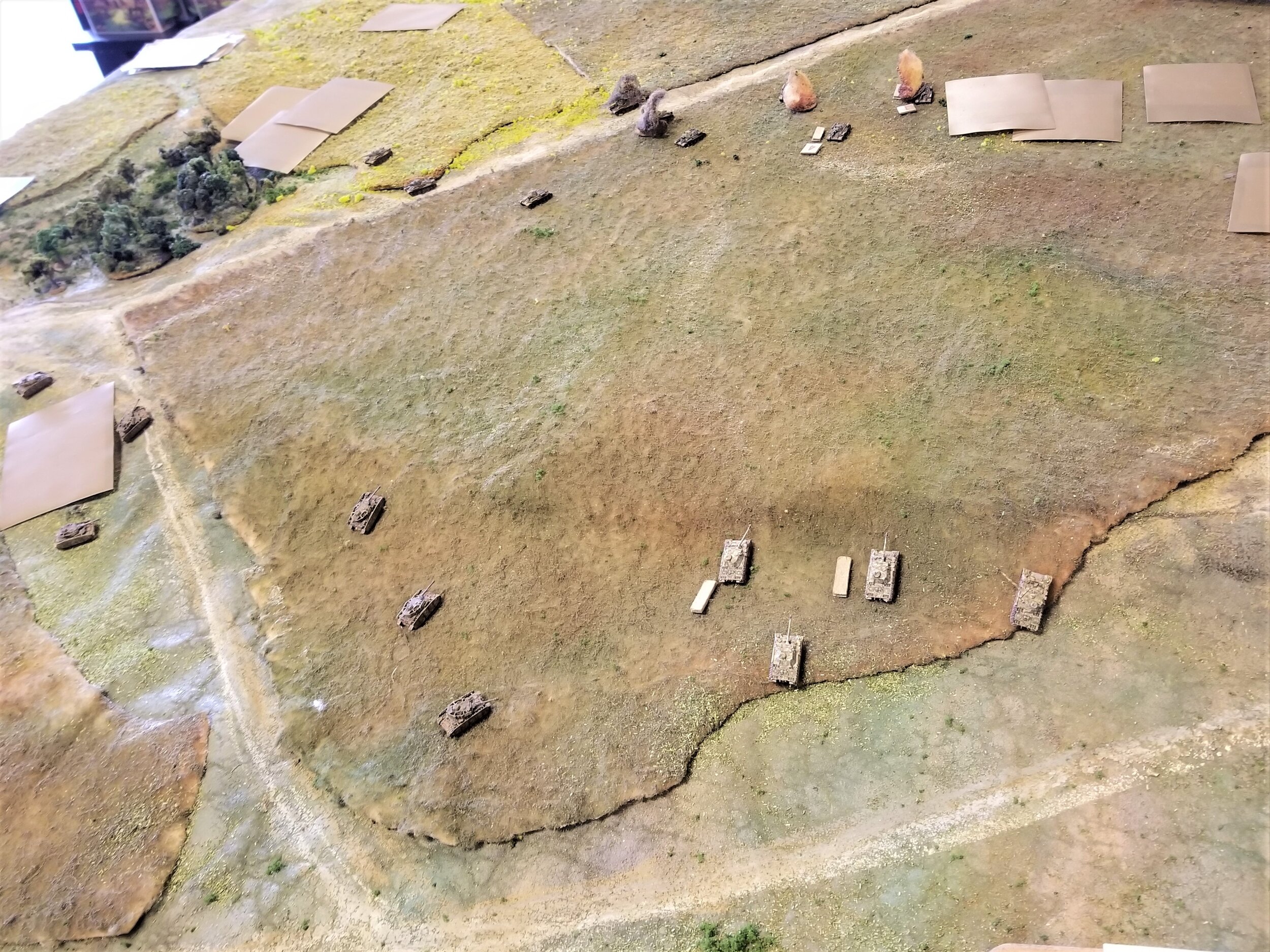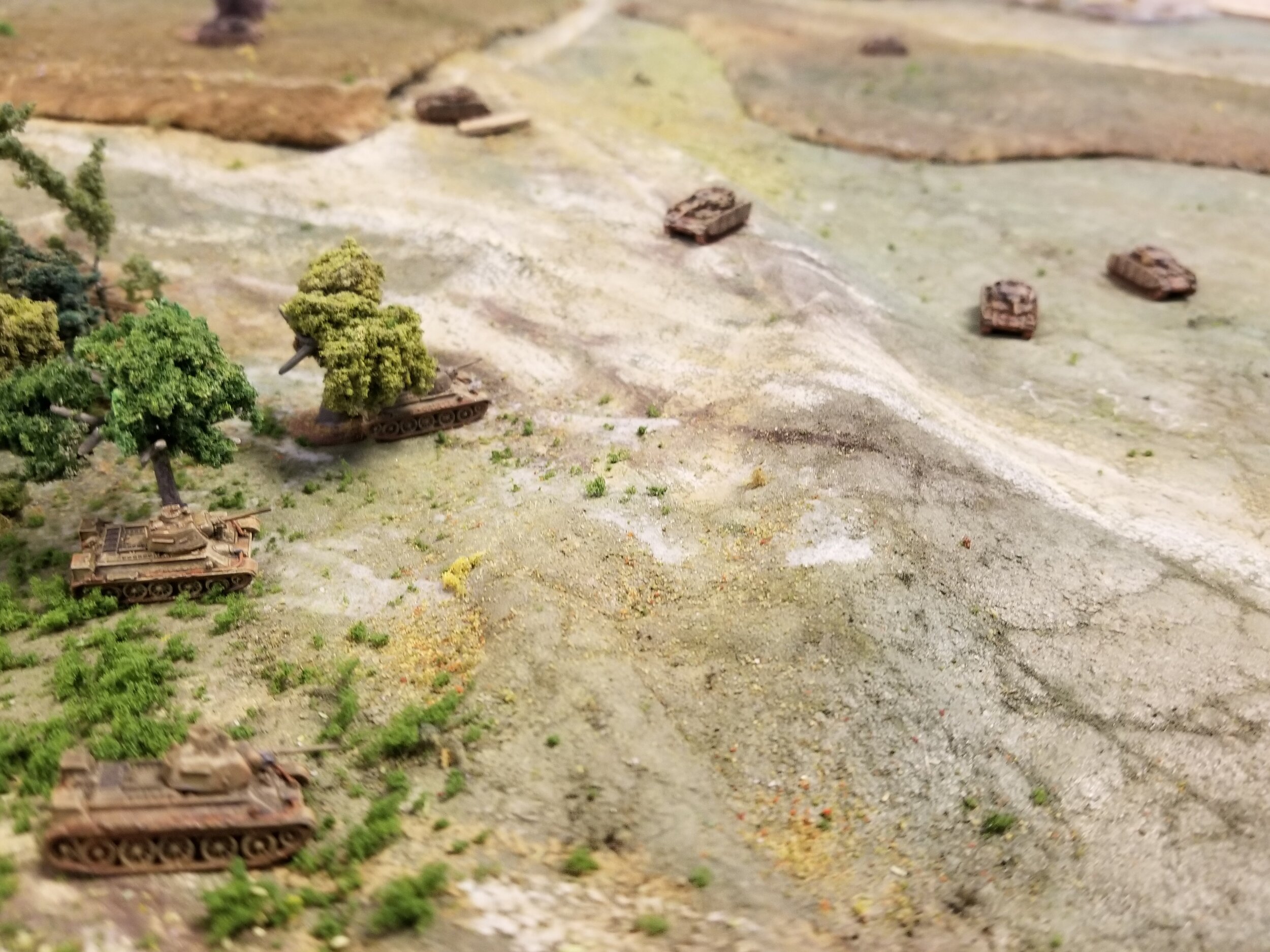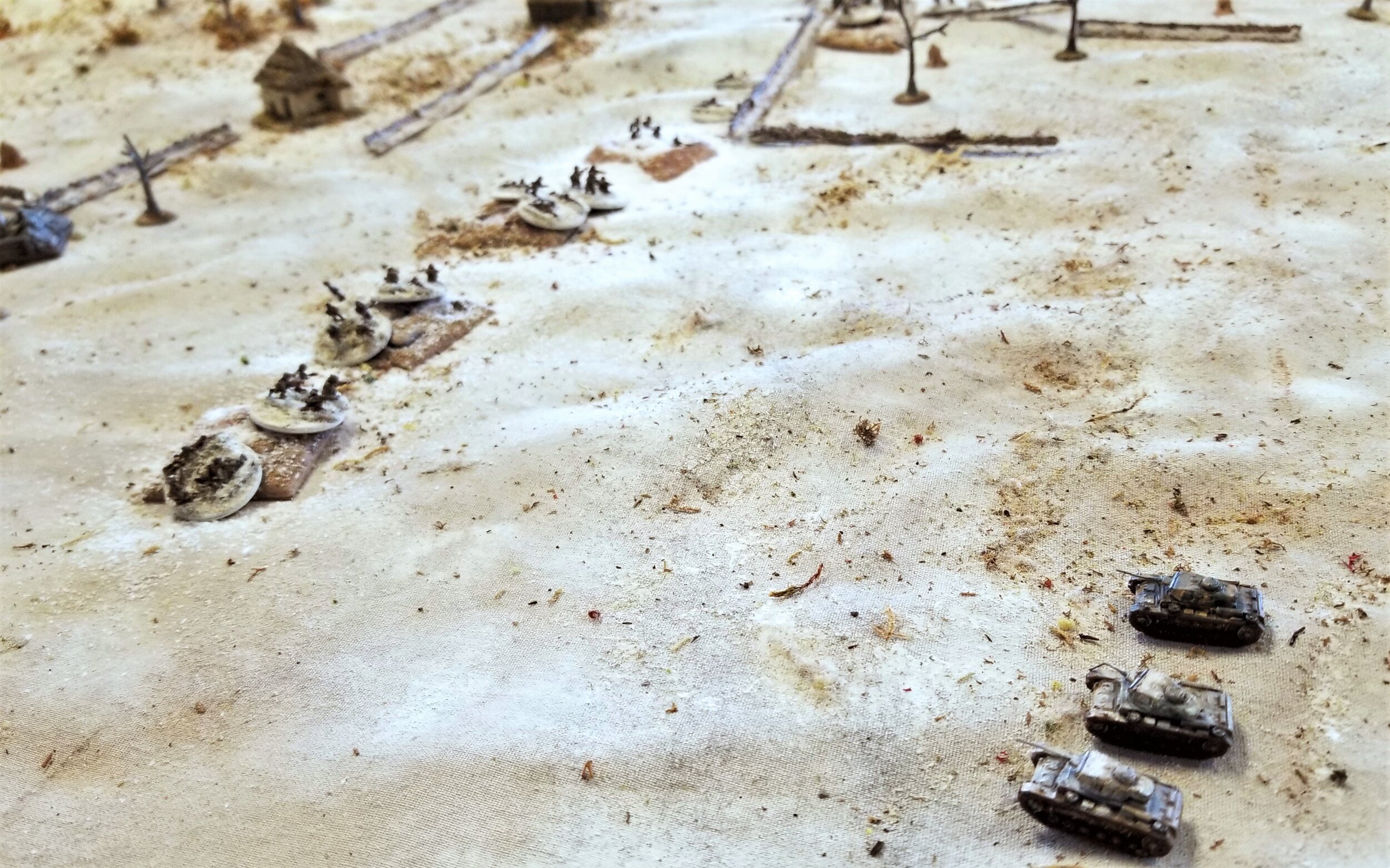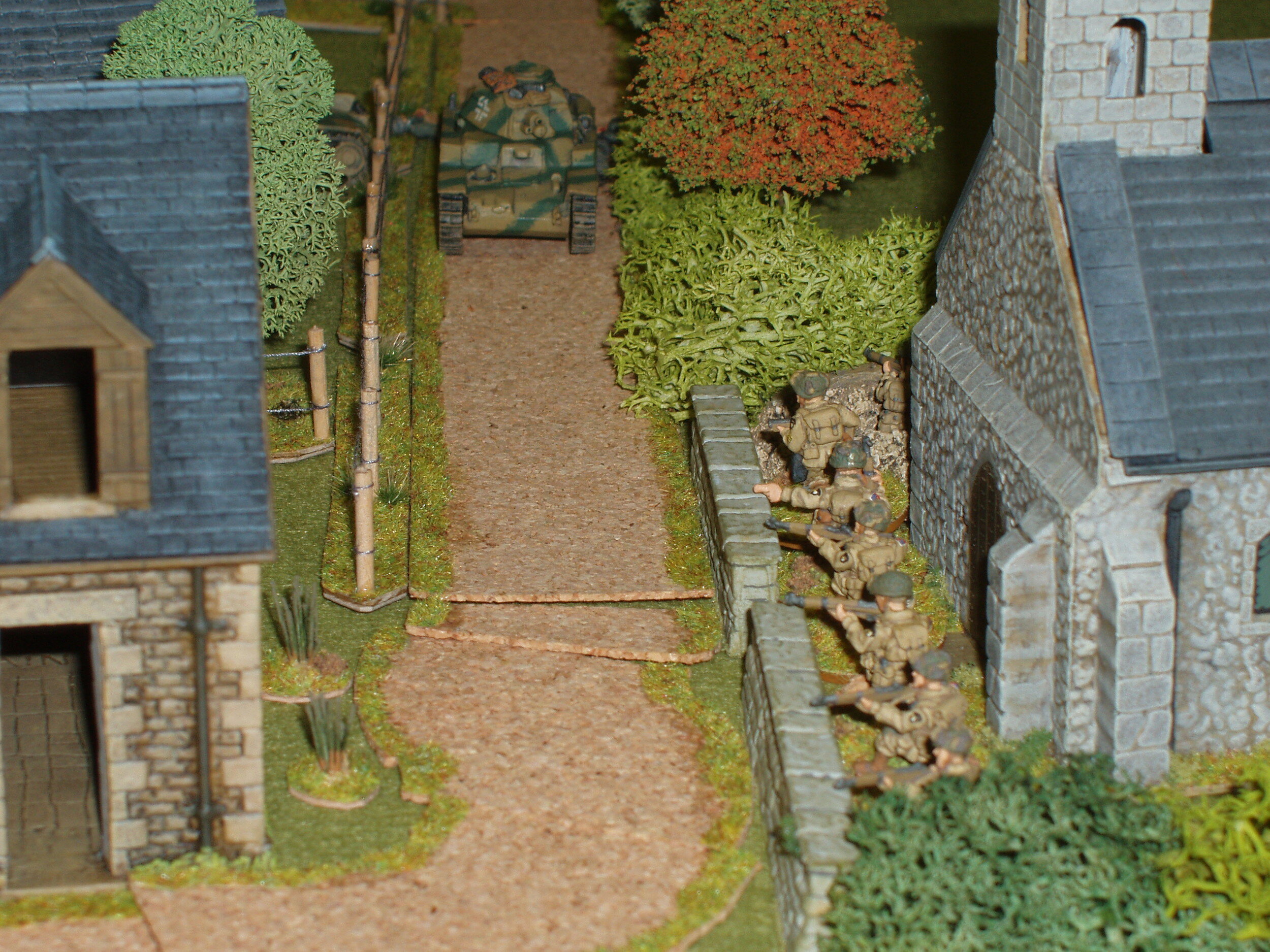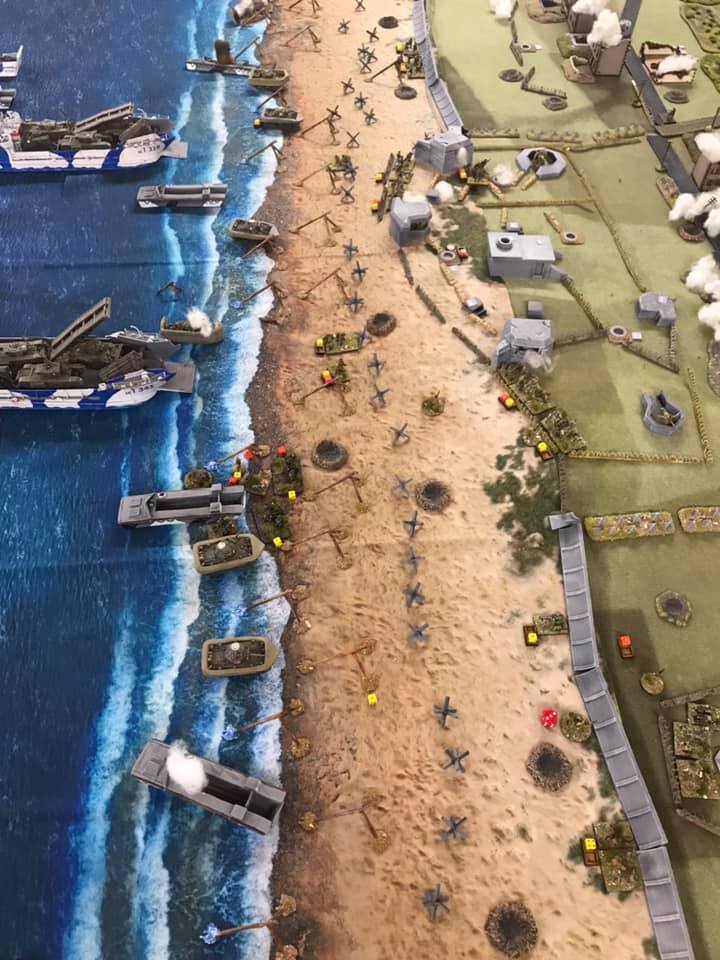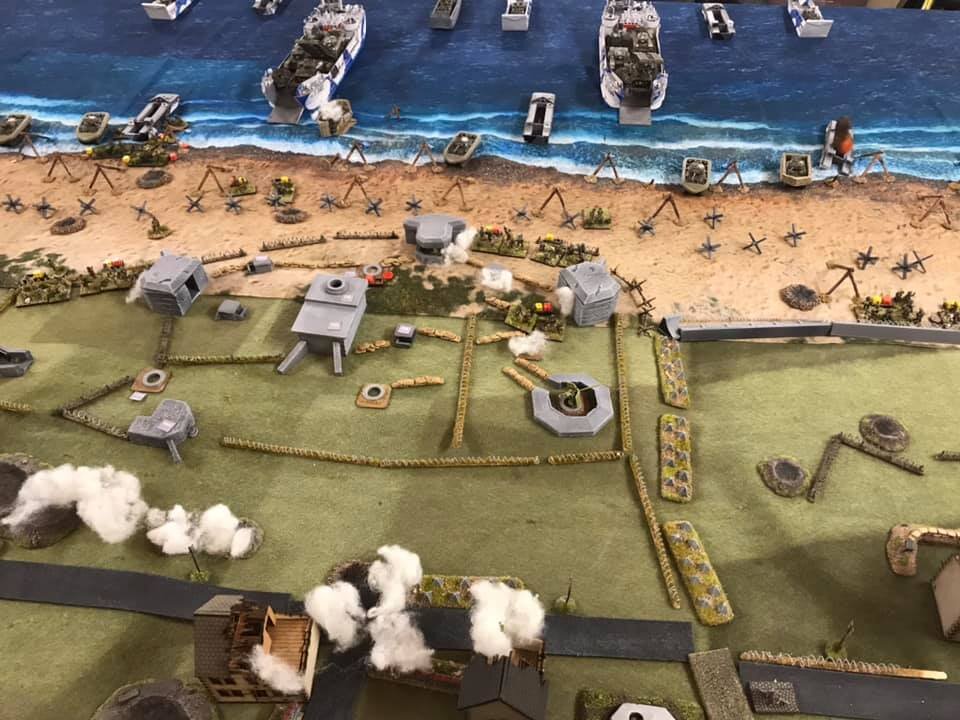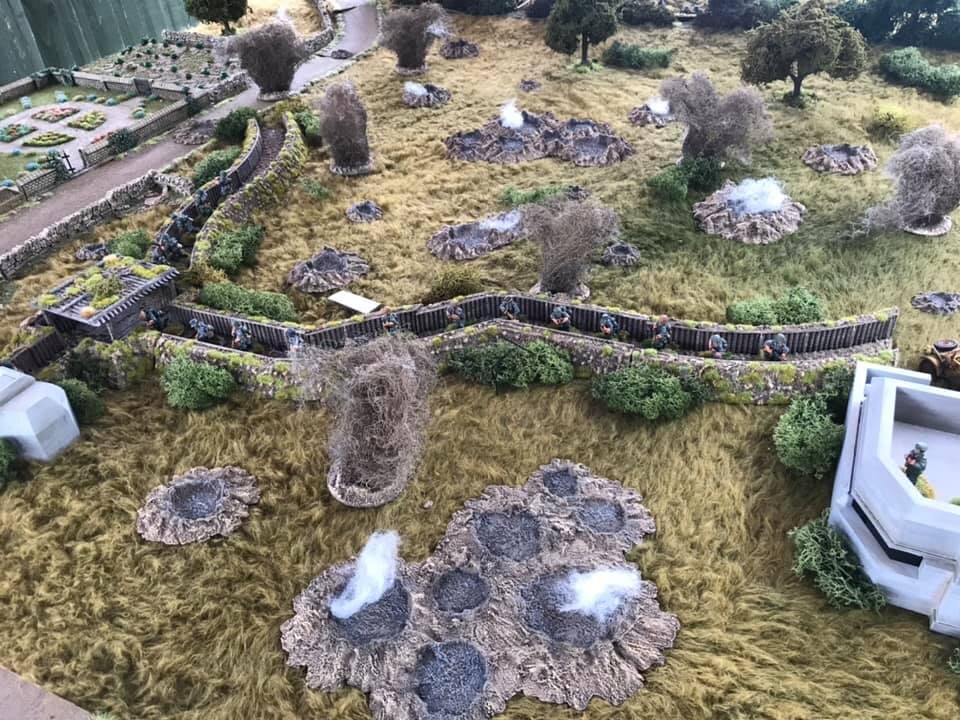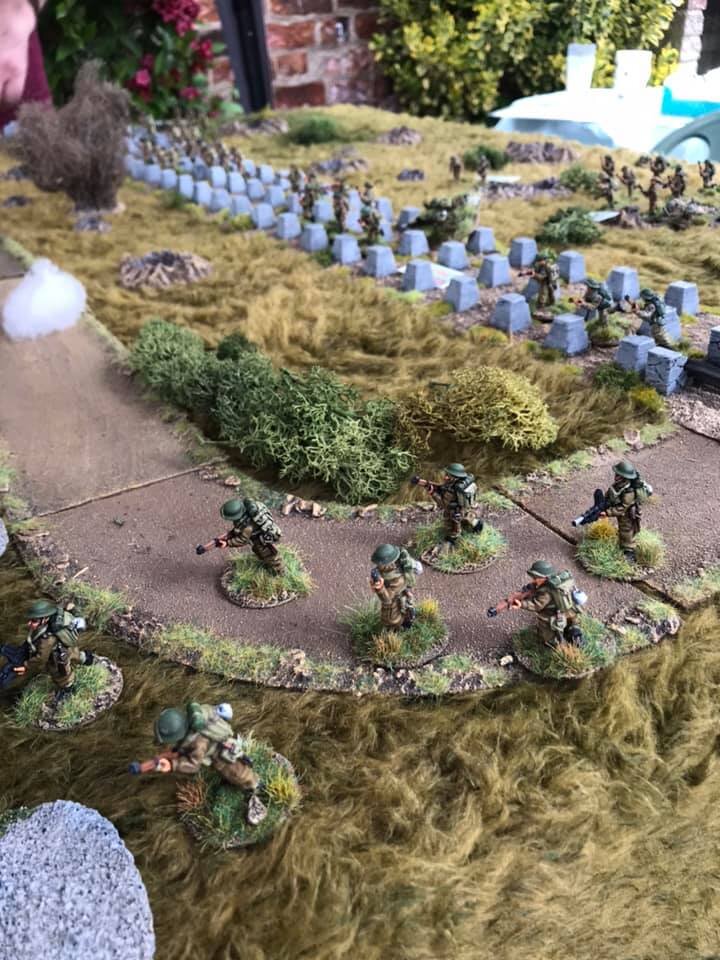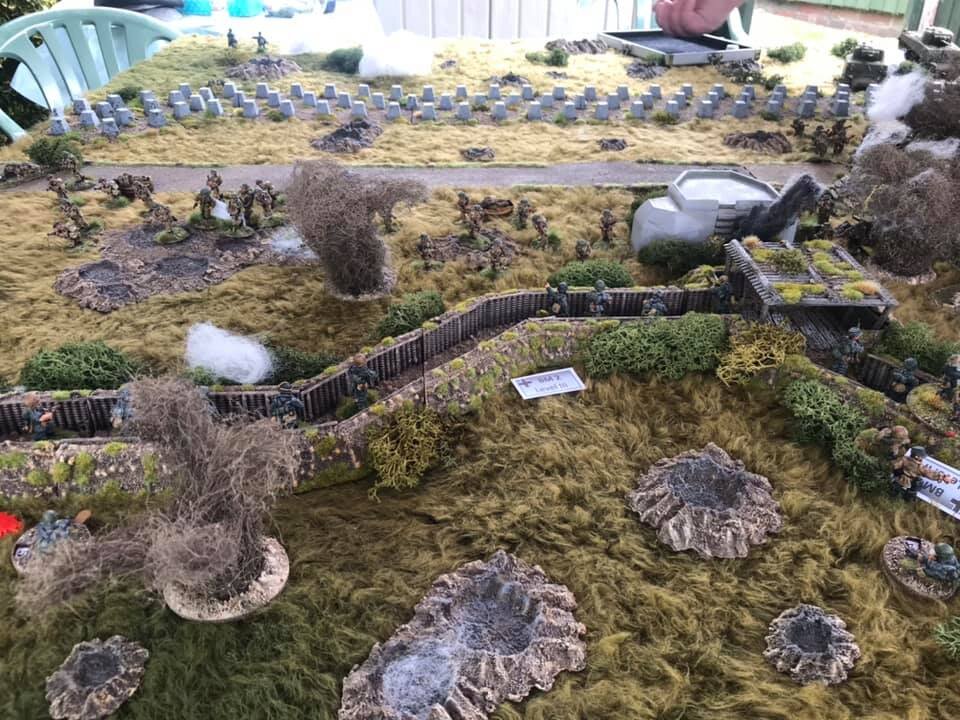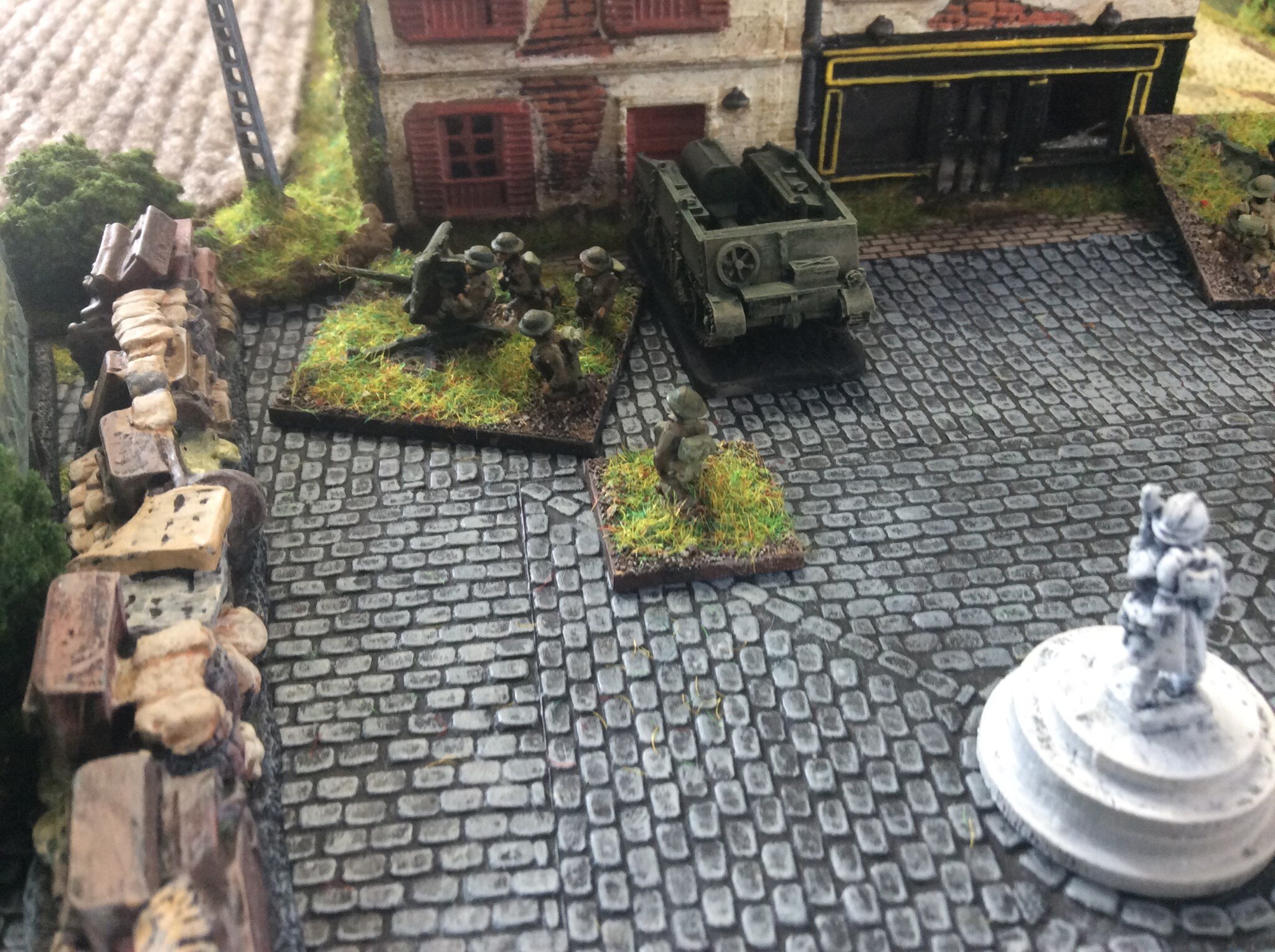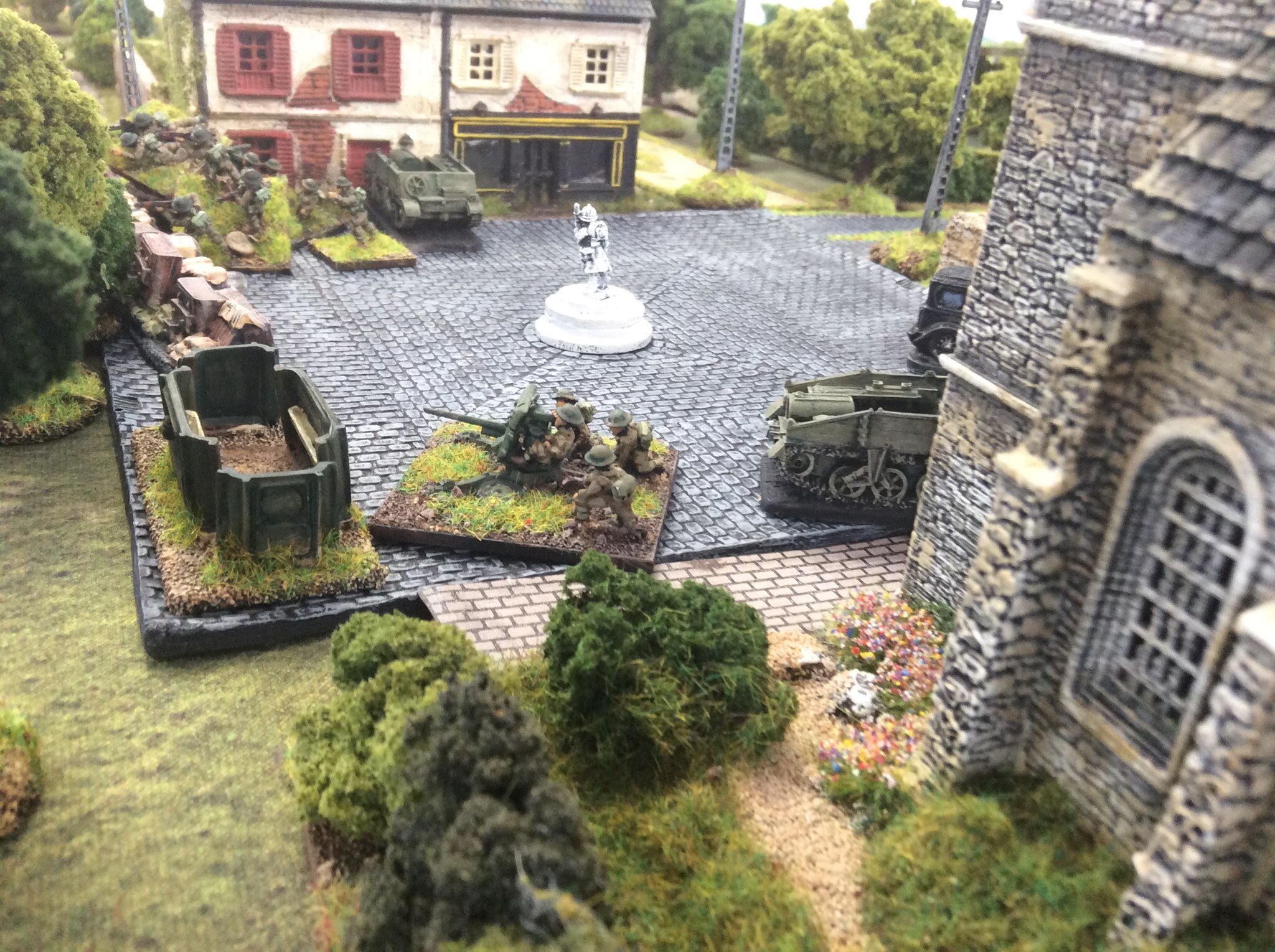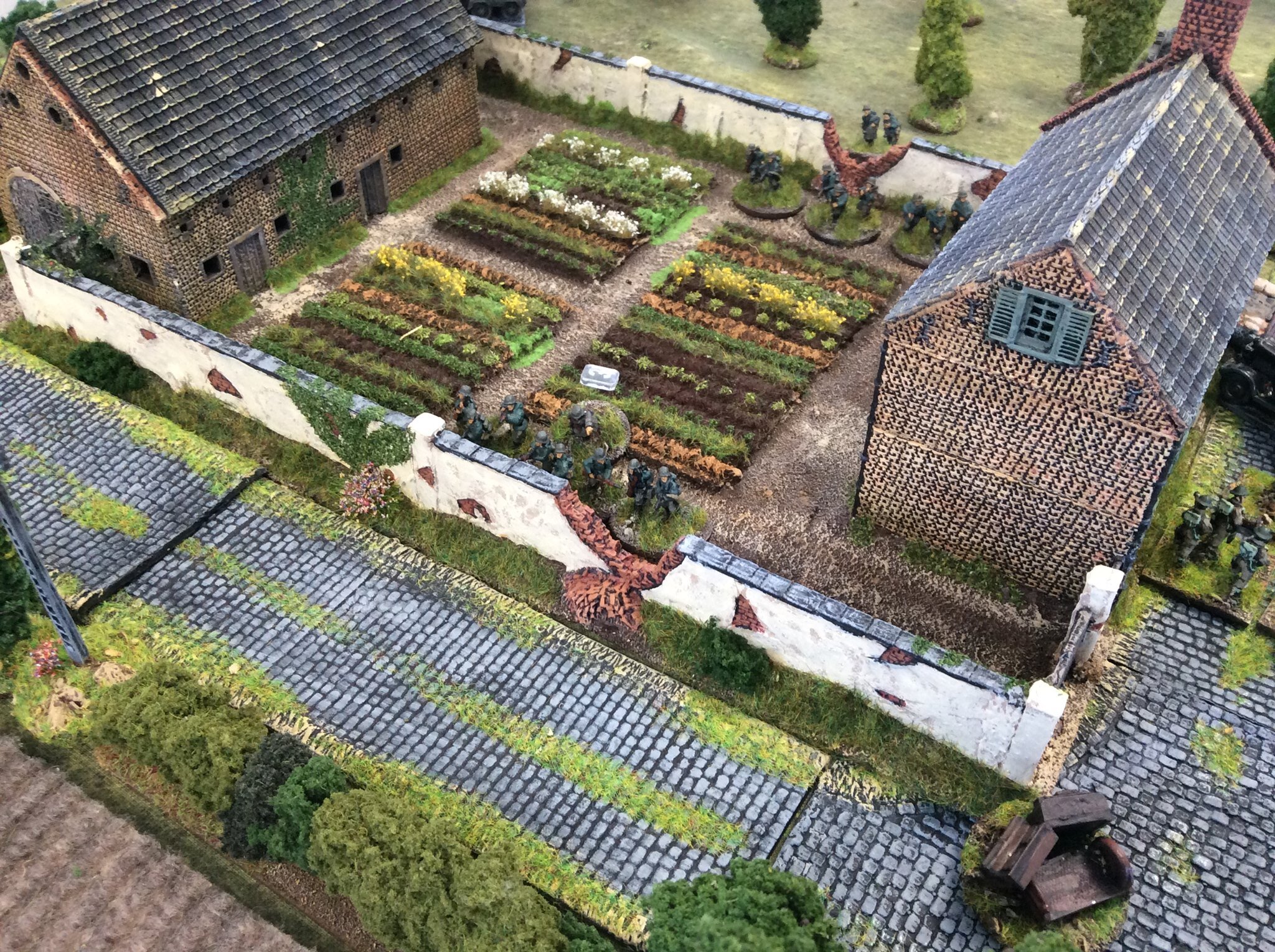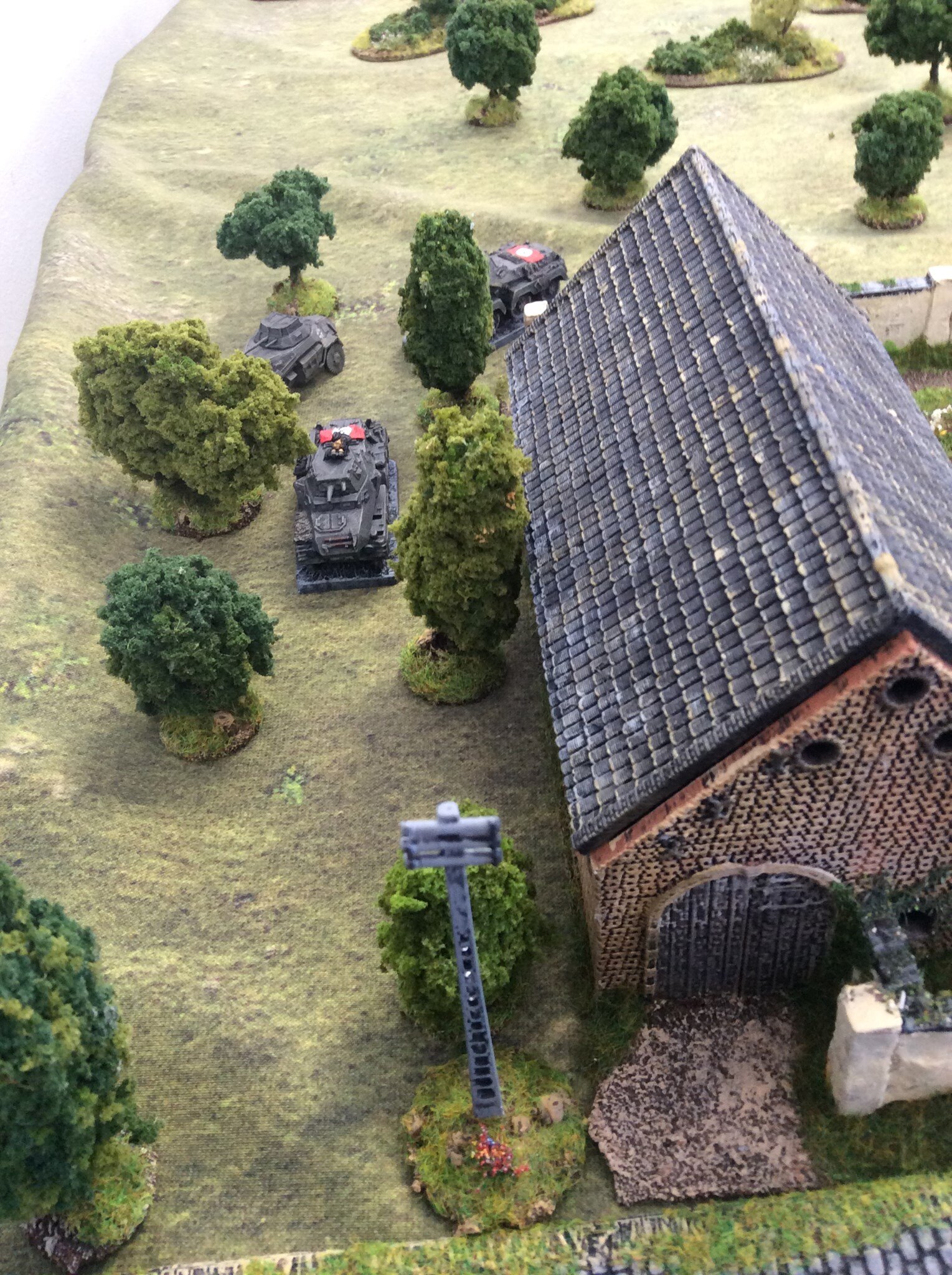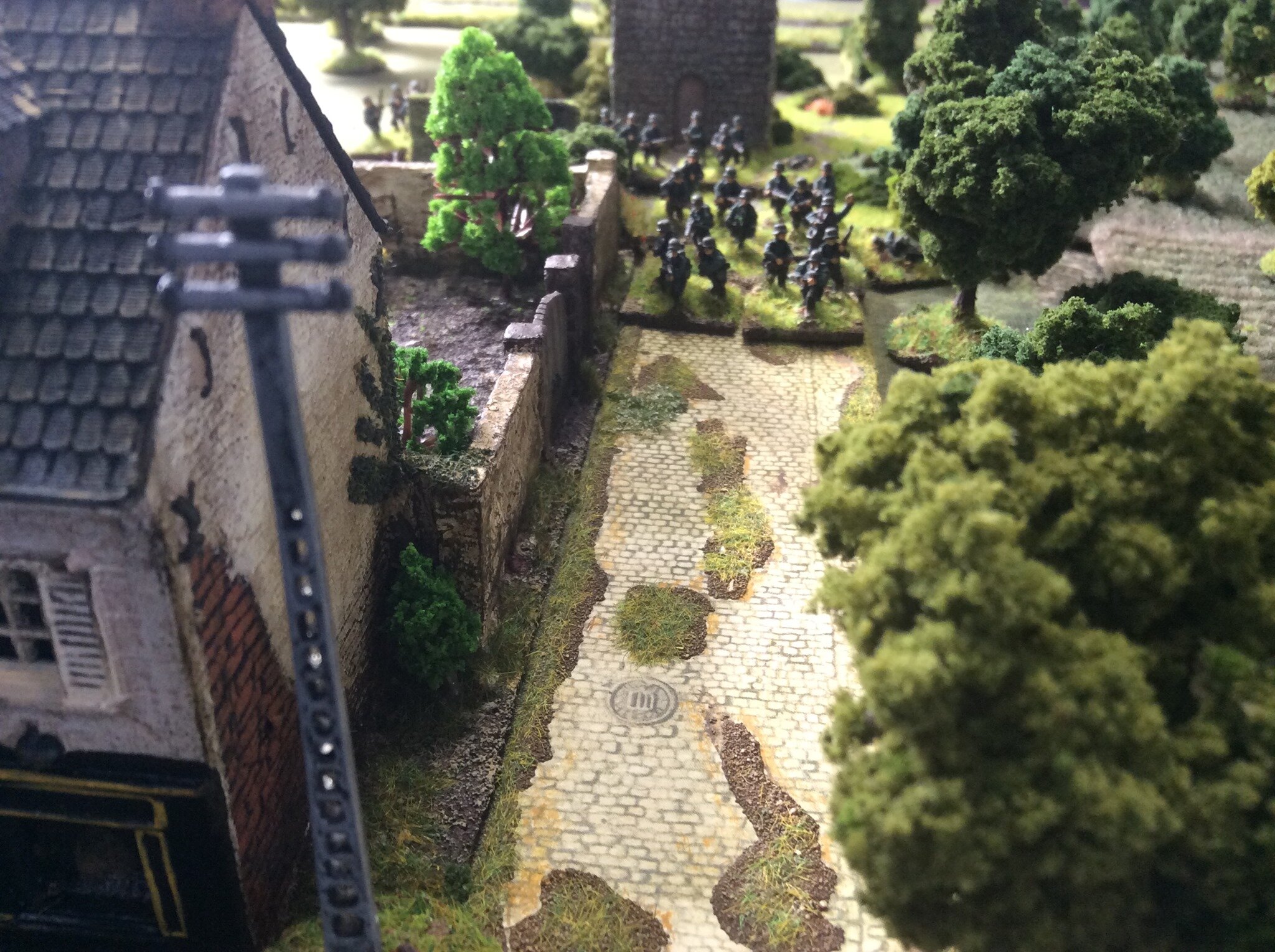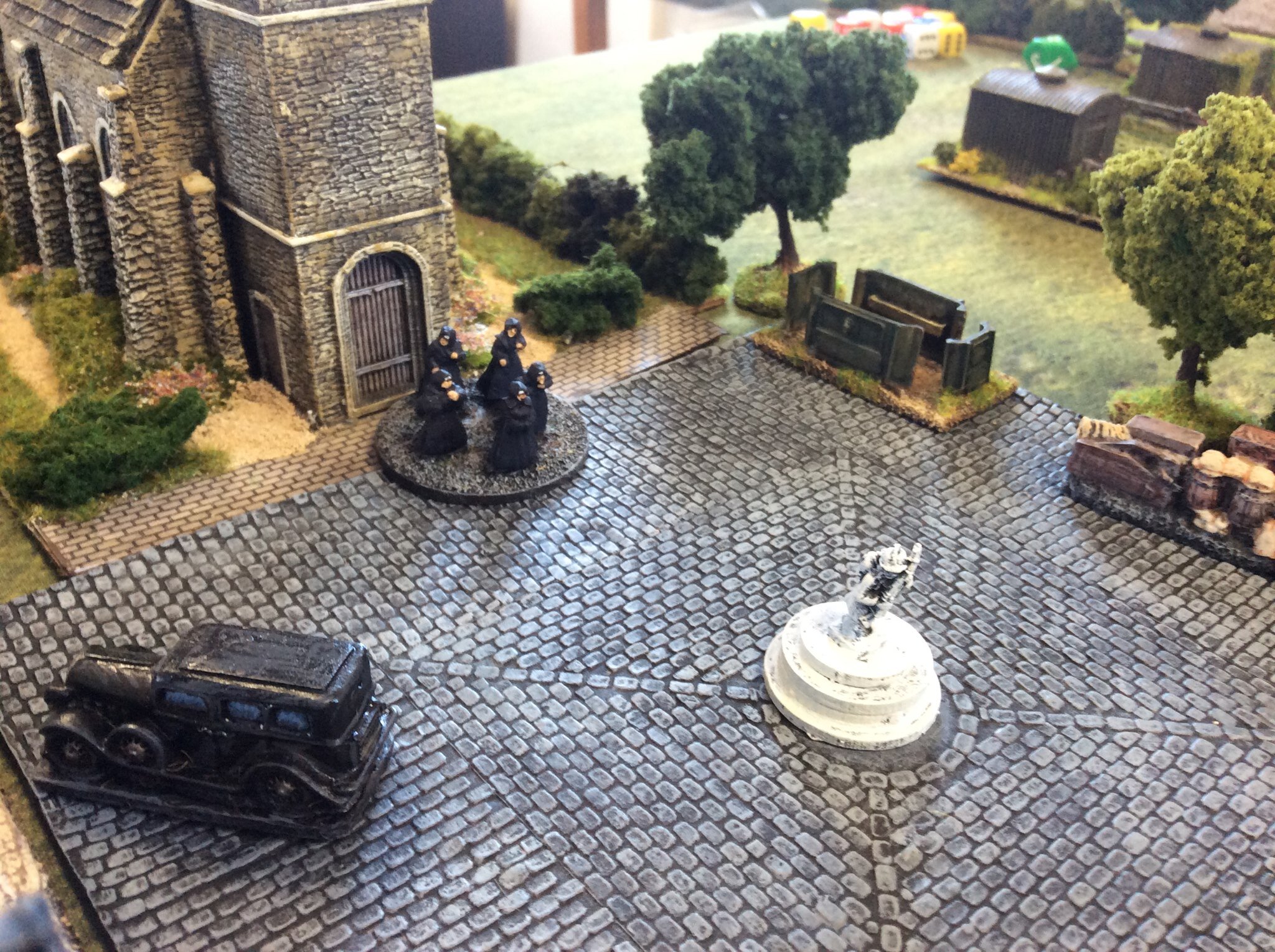
Another great days gaming with Jenny Owens and Phil Turner today.
June 6th 1944 D Day, Gold Beach ‘King Green Sector’ West of Ver-Sur-Mer. Green Howard’s assault on Mont Fleury Battery.

View from above British deployment showing the defences
Wire fence, mine field, dragons teeth and trenches!

German defenders man the trenches.

Wire fence and dragons teeth with mine field in between.

'I vill say zis only vonce'
You've been warned.

Platoon dashing to clear the road block.

Pausing at the wire while the 2" fires smoke rounds.
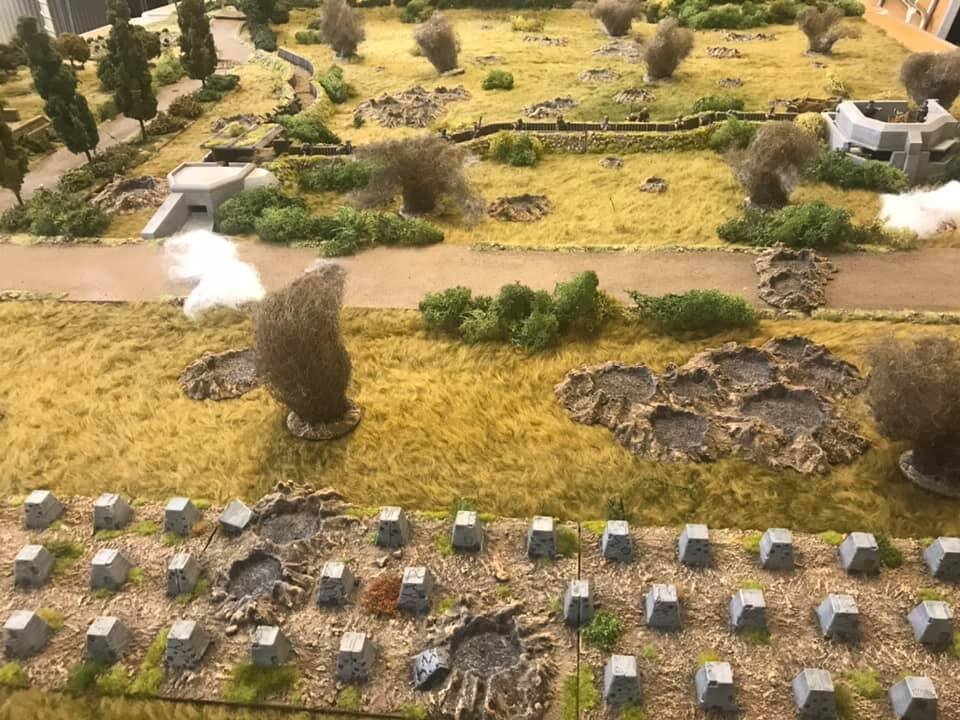

2" mortars start to make the smoke screen, while the Howards negotiate the obstacles.

Having dismantled the roadblock British troop flank the MG bunker and trenches.

Reduced visibility with reduced effectiveness

Storming the trenches.

On the other flank
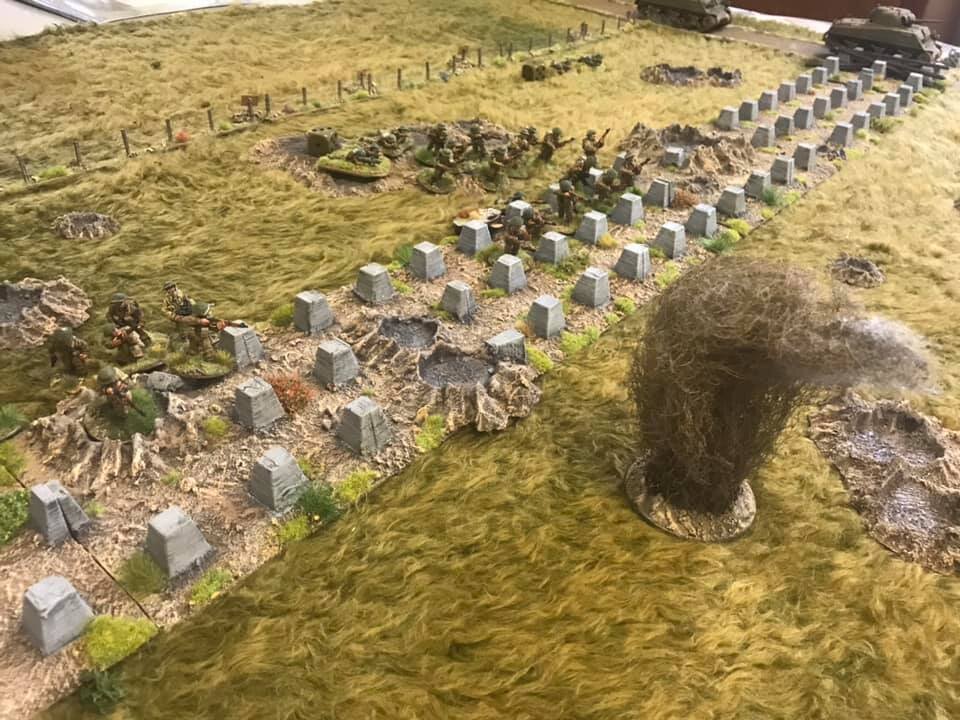
It was tough going in the centre for a while

Finally the defenders start to break under naval bombardment.
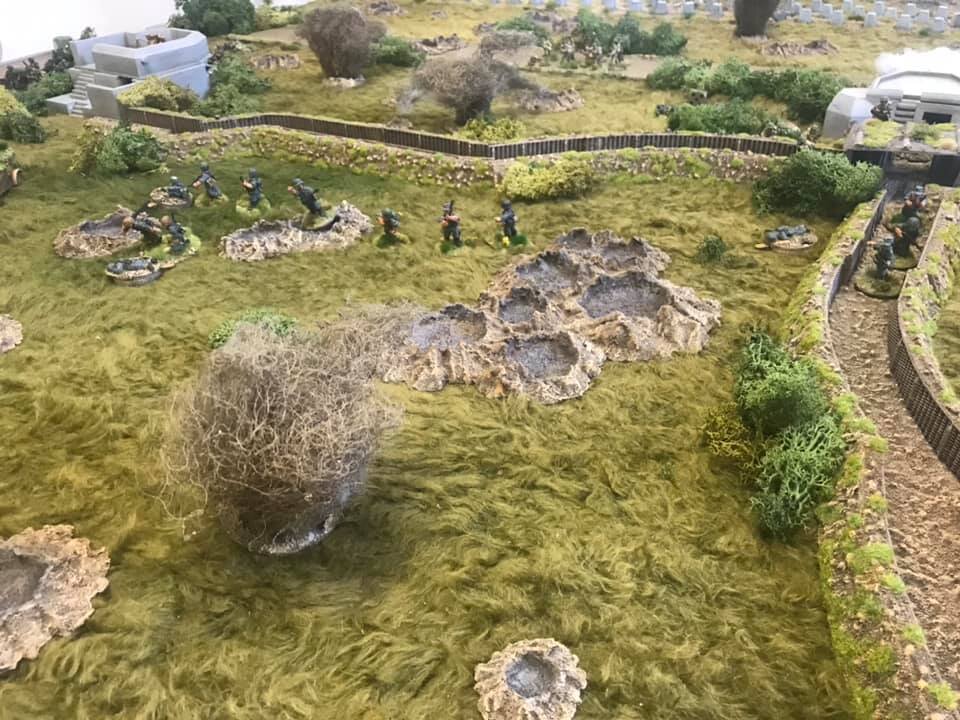


British occupy the trenches and clear out the last of the frontline defenders.
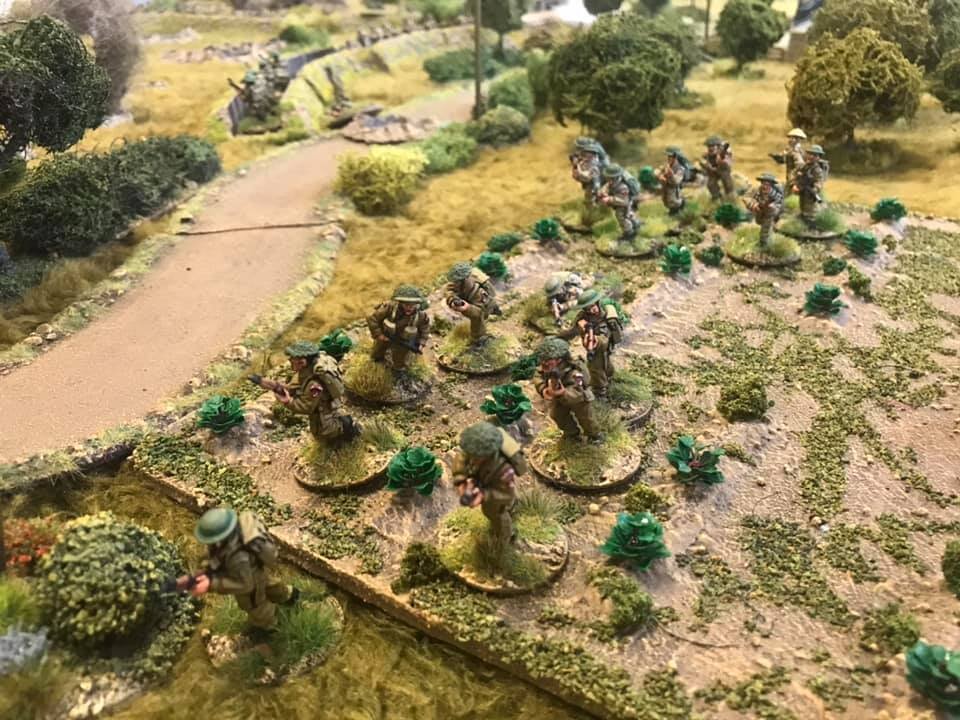
Making a dash through the orchard and rhubarb patch.

German second line getting nervous.

Tommy's in the trenches...will this be over the top in the same old style?

They decide to stay put and lay down fire to support the flanking Platoon.

Company Commander personally directs the flanking manoeuvre.
Pak 40 crew retreat due to shock from bombardment.
With no real chance of stopping the British it was decided the defenders would pull back.
More Pictures
Alan Curtis, Phil Turner






































































































































